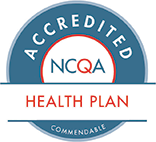Hysterectomy
Know your options — a guide to minimally invasive procedures (MIP) for hysterectomy
What is a hysterectomy?
During a hysterectomy, your doctor may remove the entire uterus or just part of it. The fallopian tubes (the tubes that connect the ovaries to the uterus) and ovaries may also be removed.
Types of hysterectomy:
- Partial (or supracervical) hysterectomy: The upper part of the uterus is removed. The cervix is left in place.
- Total hysterectomy: The entire uterus and cervix are removed.
- Radical hysterectomy: The uterus, upper part of the vagina, and tissue on both sides of the cervix are removed. This is most often done if you have cancer.
Reasons for needing a hysterectomy
- Fibroids
- Endometriosis
- Uterine Prolapse
- Uterine, Endometrial, and Cervical Cancers
- Abnormal Uterine Bleeding
What happens during MIP for hysterectomy?
There are two types of MIP for hysterectomy. Both use advanced surgical procedures that are less invasive than open procedures. These procedures allow the surgeon to remove the uterus without the large incision required by an open surgery. The surgeon gains access to the abdomen either through the vagina or through small incisions in the abdomen. Both approaches often result in less postoperative pain and quicker recovery.
For most types of MIP, the hospital stay is usually one day, and normal activity can be resumed in about two to six weeks after surgery. Patients who have had MIP for their hysterectomy usually experience less pain and faster return to normal activity than patients who have had a total abdominal hysterectomy (TAH).
| Total abdominal hysterectomy (TAH) | Vaginal hysterectomy (VH) | Laparoscopic hysterectomy |
|---|---|---|
|
|
|
Know the risks
As with any surgical procedure, MIP for hysterectomy may present risks. You need to talk to your doctor about whether you are a candidate for MIP for hysterectomy. And remember, serious complications from hysterectomy are rare. The risk for serious complications depends on the reason the surgery is needed and your medical condition and age, as well as on the experience of the surgeon and anesthesiologist. Ask your doctor or surgeon about what to expect after surgery, as well as the risks that may occur with surgery, including:
- Reactions to medications or anesthesia
- Breathing problems
- Bleeding
- Infection
- Injury to blood vessels
- Injury to internal organs
- Blood clots in the veins or lungs
- Death (rare)
Additionally, conventional surgery has a greater potential for:
- Muscle injury
- Post-operative incisional hernia
Is an MIP for hysterectomy right for you?
For some patients, MIP is not an appropriate choice. Your surgeon will help you determine the best choice for you and will consider factors such as:
- Obesity
- History of prior abdominal surgery causing dense scar tissue
- Inability to safely visualize organs
- Bleeding problems during the operation
- Underlying medical conditions
The decision to perform MIP or conventional surgery should be made during a discussion with your surgeon. Sometimes a procedure can start out as MIP, but may have to be converted to conventional open surgery based on the factors listed above.
Talk to your doctor
It's important to talk to your doctor about your care. Use these questions as a guide to help you.
- How long will it take me to recover from having a hysterectomy?
- When will I be able to leave the hospital?
- Will my ovaries or any reproductive organs other than my uterus be removed?
- When I can resume my normal activities, including school, work, exercise, sexual activity and recreation?
- What type of hysterectomy will I have? Is it a total abdominal hysterectomy or a minimally invasive procedure?
- Is there a type of minimally invasive procedure appropriate for my situation?
- Which organs will be removed during my procedure?
- Exactly where, and how big, will the incisions be that are made on my body to perform the surgery?
- I'd like to make sure I am having the least-invasive procedure. Is that possible?
- How many of these procedures have you performed in the last 12 months?
Resources
©2005 Ethicon Endo-Surgery, Inc.
a Johnson & Johnson company
- http://www.smarterpatient.com/patient/learnmore/minimallyinvasivesurgery
- http://www.smarterpatient.com/patient/healthtopics/womenshealth/mis/hysterectomy
Medline Plus, Hysterectomy,
Page last updated: 19 October 2011
Questions?
If you can't find an answer, please feel free to contact our Customer Service Customer Service Customer Service
Questions?
If you can't find an answer, please feel free to contact our Customer Service
Employer web tools
Benefit Tracker
Check benefits, eligibility, incentive and utilization
Rate finder is now in the Producer Dashboard
Log in with your current username and password to create quotes for groups up to 50.
Producer DashboardLog in






Hello.
We have exciting news to share. ODS is changing its name to Moda Health.
Moda comes from the latin term "modus" and means "a way". We picked it because that's what we are here to do: help our communities find a way to better health.
Together, we can be more, be better.
Please select the state you live in, or the state where your employer is headquartered, so we can tailor your experience:

Hello.
Please select the state you live in, or the state where your employer is headquartered, so we can tailor your experience:
Privacy notice
We use cookies and similar analytics technologies to understand how visitors interact with our website, improve performance, and enhance user experience. These tools help us analyze traffic patterns and usage trends.
We do not collect or store personal information, track users for advertising purposes, or use social media plugins.
By continuing to use this site, you acknowledge our use of cookies for analytics purposes only. For more information, please refer to our Privacy Policy.
Changing your location to Oregon
You can return to your previous location in the site header.

